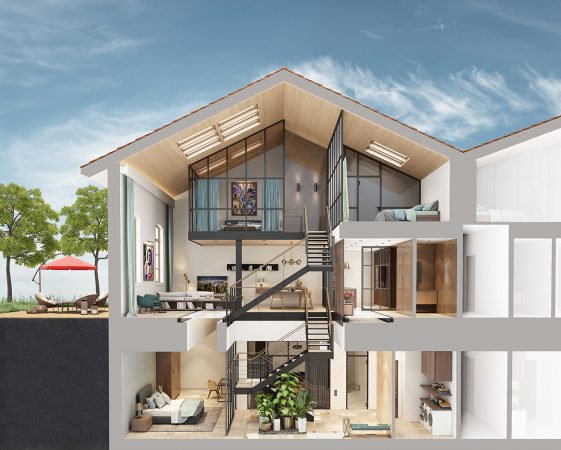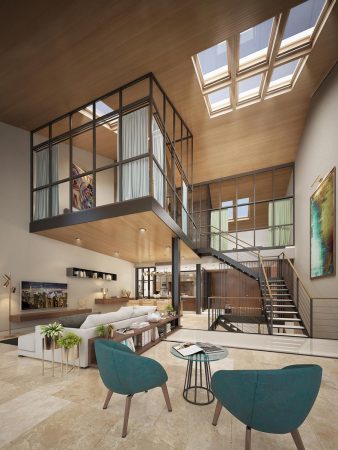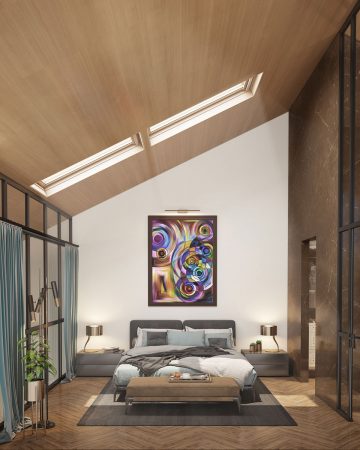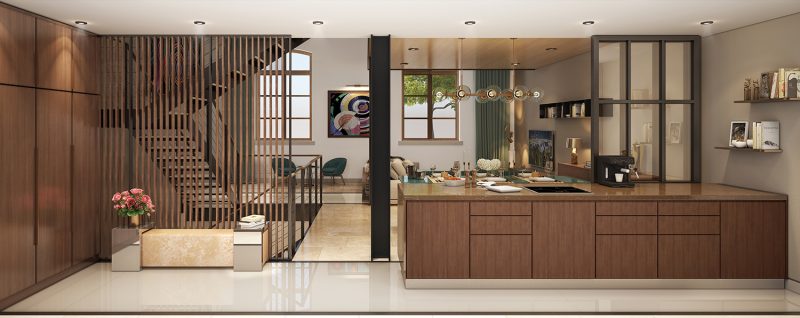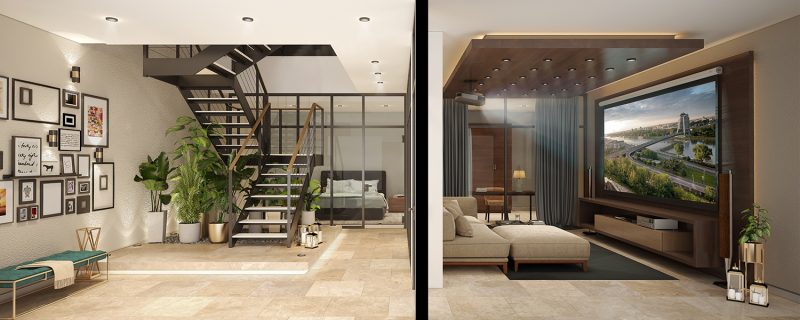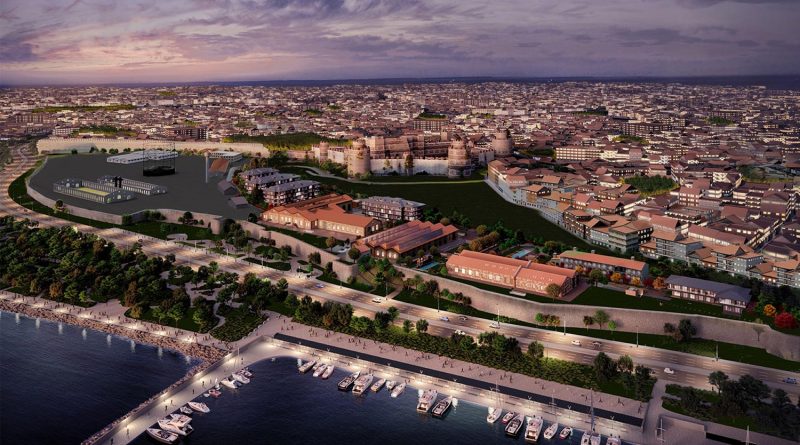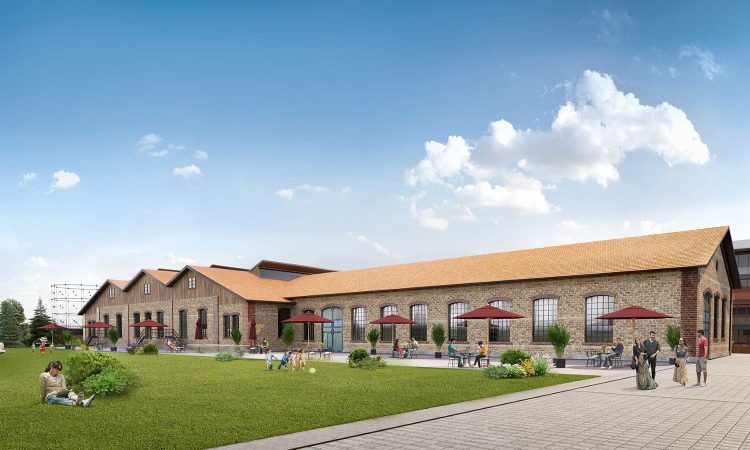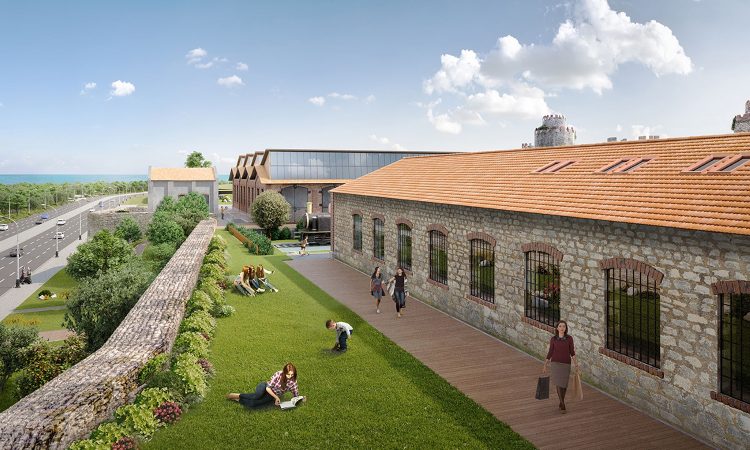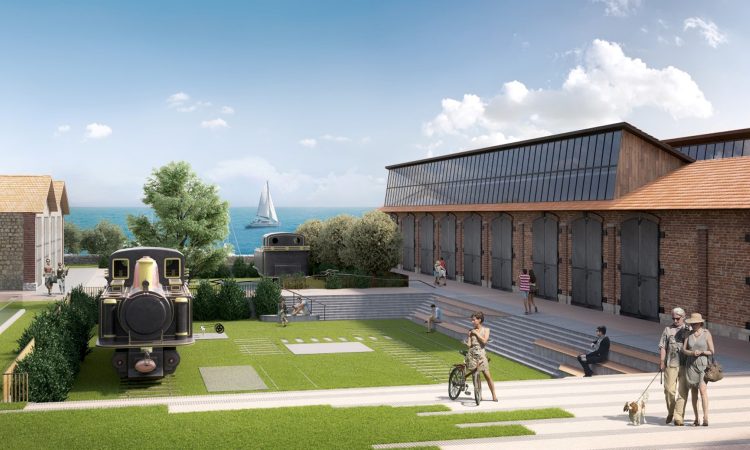CER Istanbul T3
- Istanbul, Turkey
- 2017
The project for the “CER Istanbul” T3 building, is integrated in a Masterplan to restore and rehabilitate the early 20th-century railway maintenance yards which served the railway traffic of Istanbul, including the prestigious Orient-Express.
By the mid-20th century, this entire site became obsolete as it no longer had infrastructure and facilities to serve the modern railway traffic of the city and, after decades of neglect, fell into a considerable state of disrepair.
Today, the “CER İstanbul” sits on a prime location of the city, situated on the southern side of the Golden-Horn Peninsula, adjacent to the City’s Historic Walls overlooking the Marmara Sea.
The project benefits from a unique set of architectural and urban characteristics found nowhere else in Istanbul, with a privileged sea-side view, immediate access to extensive water-front public spaces and proximity to major transportation hubs with direct connections to the city’s Historic Centre and Business Districts.
Within this exceptional urban context, the new masterplan aims to regenerate this site and create a multi-functional project unique in the entire city of Istanbul, carefully designed to offer serene, car-free public spaces, preserve and highlight the existing historic buildings, and allow for a minimal number of new constructions to guarantee the financial viability of the entire development.
As the current and relentless urban development in Istanbul follows a chaotic, inhumane, profit-driven dogma which systematically overlooks any conservation attempts, or bluntly calls for the complete obliteration of any “unclassified patrimony” outside the main touristic routes, the “CER Istanbul” stands alone as a restoration and regeneration project of one of the last remaining historical industrial sites of the city.
With the ultimate goal to achieve an economically viable model that sets a new balance between conservation, rehabilitation and creation of new functions adapted to the city’s present needs, once completed, this project will hopefully serve as a reference to help establish new policies, increase public awareness, and demonstrate that the rehabilitation of the city’s abandoned patrimony is not only financially viable but also a necessity for the preservation of Istanbul’s unique identity.
Architectural and Technical approach:
The masterplan includes the restoration of the 3 main historic buildings as well as the construction of 5 new low-rise residential blocks that together will offer a variety of residential typologies, a hotel, retail spaces, social and sports facilities and a museum. The T3 building is the smallest of the 3 existing buildings on the site, and will be fully converted into 18 private Lofts. The main challenge of this project has been the seamless transformation of a building whose original layout and configuration did not necessarily fit the new proposed functions. Furthermore, any alterations, additions or suppressions done to the exterior envelope of the historic buildings is restricted.
For the design and engineering teams to fully comprehend the complexity of the existing volumes, the design process relied on extensive 3D simulations aimed at exploring diverse ways to integrate the new building program into the existing volumes, offer different circulation schemes and visualize the integration of all the technical components.
A solution was found with an optimal tri-dimensional configuration with respect to the existing building envelope, program defined by the client, maximum use of the volume’s inner height, adequate levels of natural light and integration of all technical elements with minimal visual impact both from the outside of the building and its inner spaces.
The selection of construction techniques and materials was developed in collaboration with a commission of restoration experts so that the industrial essence of the building is preserved by reprising many of the original construction techniques and materials.
However, in satisfy the current technical requirements for fire safety, energy efficiency and static performance, the roof must be completely replaced with added skylights and appropriate insulation, and the original wooden structure will be replaced by a new steel structure completely detached from the original façade, redistributing loads of the new construction towards the new foundations with minimal structural impact on the facade.
As for the mechanical systems, it has been proposed that the entire CER Istanbul project is served by a BMS system (Building Management Service) which will control and monitor all mechanical systems with high-class energy efficiency principles.
All buildings will achieve U-values according to ASHRAE 90.1-2007, with the addition of environmentally friendly insulation materials such as rock wool. Fresh air rates of all AHU (air handling units) are satisfying ASHRAE-62.1-2007 requirements, with a minimum of %70 efficiency rotary wheels, and low velocity and indoor air quality sensors at their return lines.
All the fans, booster sets, and circulation pumps used for water systems, heating systems, air conditioning and ventilation purposes have their own frequency control units and heat pumps type high-efficiency VRF system is using for heating and cooling of historic buildings.
Heating system equipment has motorized balancing valves for automation and energy-saving and operates by condensing natural gas-fuelled energy-efficient boiler with low-temperature working conditions.
All Residences within the new and renovated buildings with have an underfloor heating system with low-temperature working conditions.
The integration of these systems has received the “A class energy certification” according to Turkey's Energy Efficiency Standards, demonstrating the low environmental impact of the project.
